Meanwhile, these consumers are becoming more aware of the polished marketing campaigns used to capture their patronage — and are slower to trust many of the strategies marketers have used for decades. Instead of relying on company-generated content, customers are turning to their peers to determine whether a brand is right for them, which makes user-generated content more important than ever.
Customer endorsements are a driving force behind the success of many businesses, regardless of size or industry. Insights from your consumer can help you create new and unique content that is relevant to your target demographic — without you having to lift a finger. This type of content can help engage your readers and build your reputation as a trusted brand.
Your consumer can be a valuable resource for advertising, so it’s important to consider the ways customer-created content could transform your bottom line in 2018.
1. Reviews and Testimonials
Customer reviews are a crucial component of your company’s success: 90 percent of American consumers read reviews online before making a purchase decision.
Consumers will often start on independent review sites, which are important to monitor and respond to in order to provide good customer service and will also contribute to search engine rankings. Collecting and displaying reviews from customers directly on your site, however, helps increase conversions far more than reviews on external sites.
Reviews provide additional content, which gives search engines more to work with when ranking your site. Consider setting up a dedicated reviews page, like in this example from Guava Family:
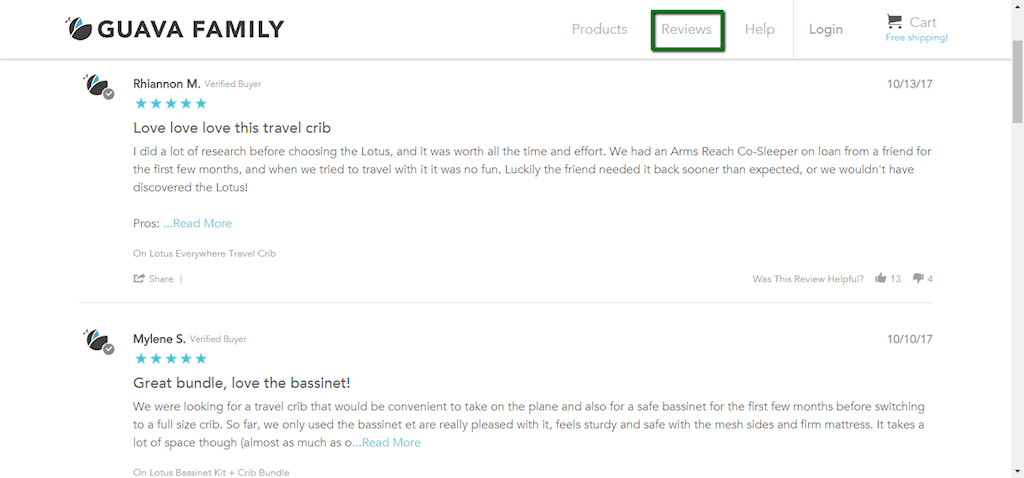
This kind of page can bring interested visitors to your site first, rather than an independent review site or third-party retailer like Amazon. Making it easy to access the positive reviews, as Guava Family does by including a reviews tab in their header, can improve the credibility of your brand. If people have more faith in your product or service, they’ll spend more time on your website — instead of dismissing it immediately.
Testimonial pages are a slightly different approach to customer-generated content. While similar to reviews in essentials, they often speak to a broader experience with a service. Testimonials are also typically more carefully curated, with companies selecting key people to give their feedback and displaying it prominently, like in this example from Phocas Software:
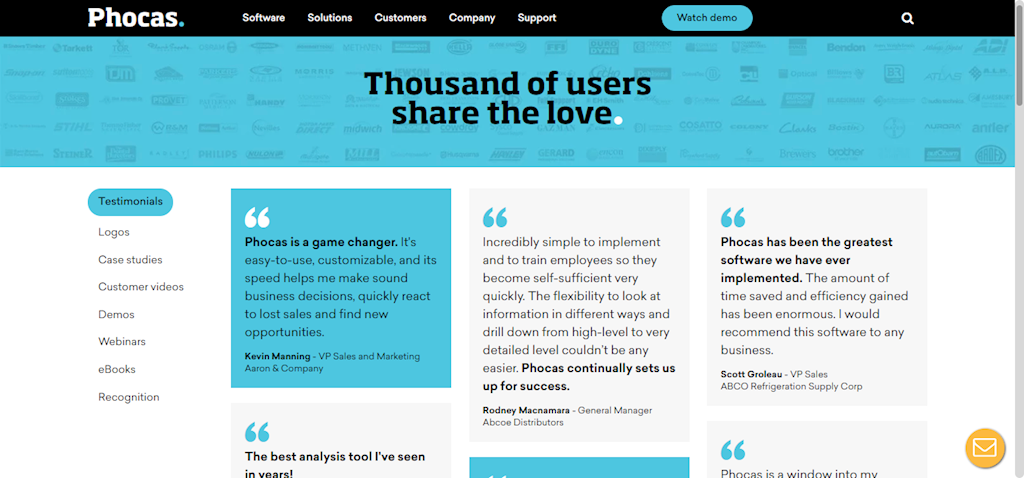
Reviews can also be included directly on the product page, as they may contain information a new customer needs to solidify their purchasing decision - 63 percent of customers have indicated that they’re more likely to buy a product or service from a site that features reviews. Incorporate reviews by displaying a rating in the product information, and then direct readers to more detailed information. Many sites use this tactic, such as HP:
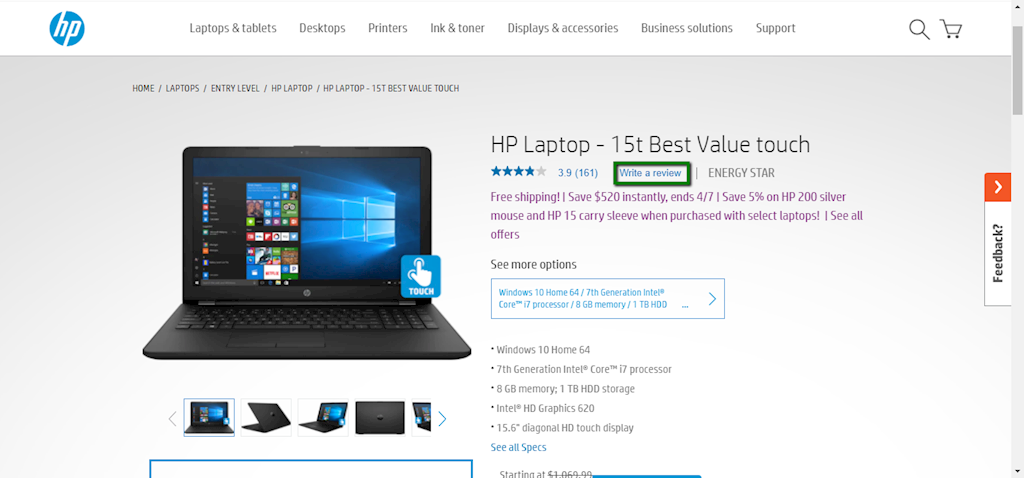
HP also offers an option for visitors to write their review right on the product page. This makes it easier for customers to provide product-specific reviews, and is a key part of any review-gathering strategy.
Ask for reviews from every consumer with every transaction, whether through an email campaign or a review request immediately following a purchase. External review sites are important, as consumers may refer to those sites first, and monitoring and responding to reviews there can do a lot for public image and customer service, however, reviews taken directly from your consumer at the time of purchase are more easily leveraged for your website’s benefit. Read more about how to incorporate reviews in this article from SEMrush.
2. Video Interviews and Testimonials
Written customer reviews are taken for granted by most consumers. To stand out, capture the power of video marketing to gather and share reviews and testimonials. Video is a powerful testimonial tool, as it allows consumers to hear and see the authenticity of a customer’s review.
Video production requires a high investment, but even one or two video testimonials can go a long way. Invitae prominently displays video testimonials, while also offering written accounts of customer experiences under a tab called “Real Stories”:

Customer stories can be transformed into fantastic video content: invite loyal customers to be on video, and look for those with an exceptional story to capture the most impactful testimonial. Be sure that your video subjects are a representative cross-section of your target audience.
Here are 3 key tips for capturing video testimonials:
Don’t force the answer you want to hear.
Consumers can tell if a testimonial seems forced. Don’t ask your client to follow a script; use a Q & A format to get real answers that offer authentic reactions and anecdotes. Offer open-ended questions, and consider sending the questions in advance to give subjects time to prepare.
Ask the right questions.
No one is watching a testimonial video to find out more about your product’s features. Instead, ask the customer you’re interviewing about the benefits your product provided, and the problem you solved for them. You might also consider involving customers in tutorial or how-to videos that solve a problem your target demographic has.
Hit the video timeline sweet spot.
Keep your customer testimonial videos under 2 minutes long. During the first 30 seconds, establish who the customer is, spend the next 30 seconds discussing the problem they had, and use the last bit of video to explain how your product or service solved their problem.
Another approach is that of Colorescience, a makeup company that embeds review and how-to videos from beauty bloggers and vloggers, categorized by product:
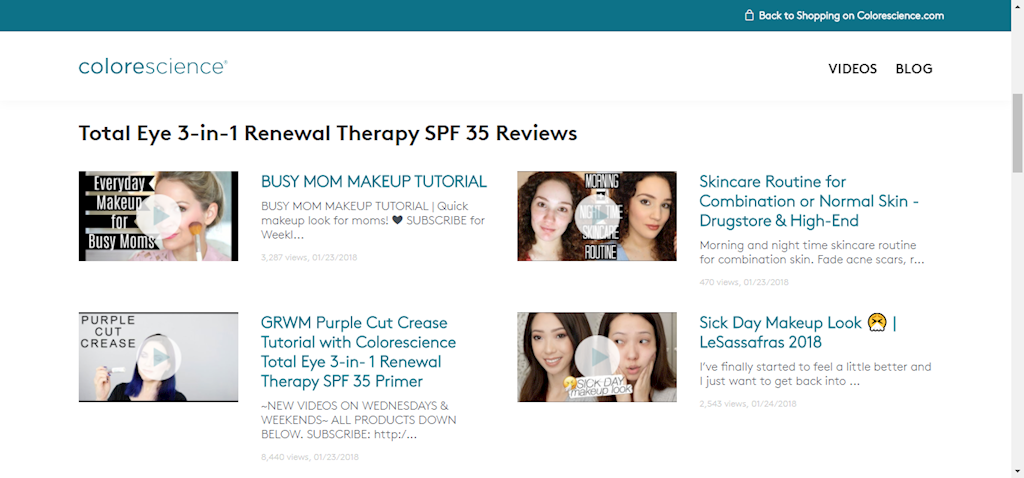
While this approach doesn’t provide original content to the website, it has the potential to increase conversions by offering authentic, non-company created reviews directly on the site that show precisely how the product works.
3. Customer-Focused Guest Posts
If your website has an active blog, you understand how demanding the writing process can be — and how important it is to put up new, relevant content on a regular basis. Consider recruiting loyal customers to tell their story for your blog. Customers can write guest posts recounting their experience with your business, or you or a team member can interview them for a simple Q&A style blog posts.
The goal is to alleviate some of the work for you while gathering original and unique content than benefits your site and other customers, so choose customers that you can trust to write a compelling story or cooperate with you for an interview. Follow the same principles for blog interviews as for video testimonials; ask open-ended questions where the customer can provide genuine answers about their experience, with minimal prompting from the interviewer. This resource from Articulate Marketing offers some tips for conducting effective interviews.
Another option is to develop case studies based on customer success stories, like Vertical Response does in this example:
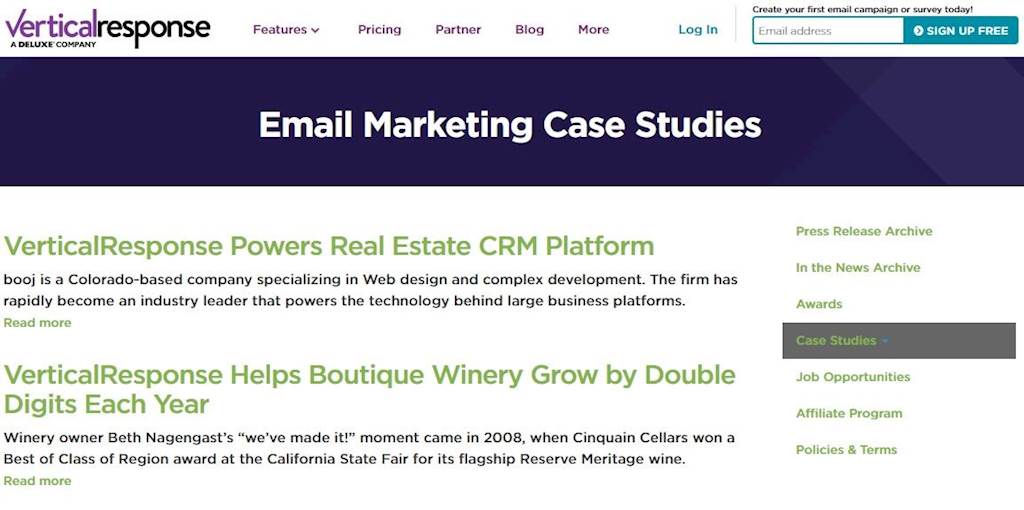
Case studies are a great way to demonstrate how your business has helped real people. A well-rounded case study can include customer quotes, pictures, and measured results, all of which provide value and draw in potential new customers.
Bottom Line
User-generated content proves that consumers are a brand’s greatest resource. In today’s heavily saturated market, a customer is more likely interested in hearing the thoughts of a like-minded consumer, not the words of a cleverly written sales pitch. Gather insights from excited and engaged customers and develop content that will continue to draw in more leads and eventual customers.
Discover what makes your target audience excited (and willing) to create content and engage with your brand, and form a strategy around curating customer-created content.
Access the latest business knowledge in Marketing
Get Access







Comments
Join the conversation...